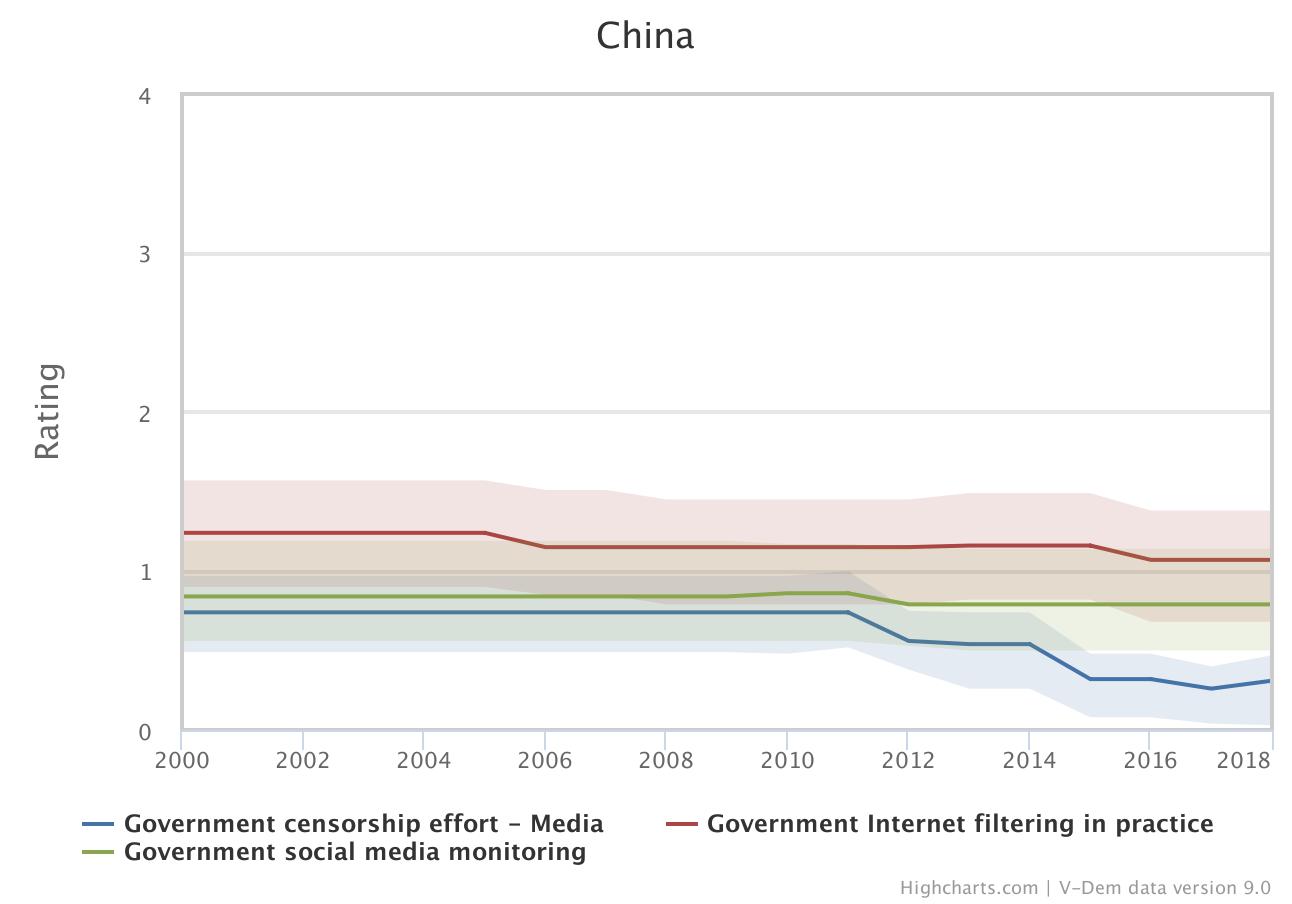Does China's Media Censorship Worsen the Spread of the Coronavirus?
By: Lukas Bernhard
Feb 03, 2020
The current outbreak of coronavirus in China raises concerns about access to information and how this will affect the global spread of a deadly illness. These fears stem from the Chinese government’s reluctance to share information at the early stages of the SARS outbreak in the early 2000s, which allowed the disease to spread. Using new Digital Society Project and V-Dem indicators, we show how systematically the Chinese government hinders its people from accessing information.
Here we focus on indicators for governmental attempts to censor to the media, to filter internet content, and to monitorsocial media content. All variables range from 0 to 4, with lower scores implying that the government’s attempts to hinder access to information are more severe.
As the graph reveals, the Chinese government does not grant its citizens free and unmediated access to any form of media – a situation that has worsened over the past years. In 2018, China’s scores on government censorship efforts targeted at print and broadcast media are approaching zero, meaning that these attempts are “direct and routine”. This score is only slightly better for other forms of media. Most content on social media gets surveilled, whereas political information online, except sites that are pro-government, gets removed commonly.
These indicators of censorship and internet filtering practices suggest that the Chinese government’s approach to information freedom during the current coronavirus outbreak remains similar to (or worse than) during the SARS epidemic in the early 2000s. While the Chinese government has responded more quickly to the coronavirus, the regime is also actively engaged in censorship efforts, particularly online, to silence those who diverge from the official story.
To learn more about V-Dem indicators and our online analysis tools, visit www.v-dem.net.


